Brinsea Hatchmaster Handleiding
Brinsea
Niet gecategoriseerd
Hatchmaster
Bekijk gratis de handleiding van Brinsea Hatchmaster (4 pagina’s), behorend tot de categorie Niet gecategoriseerd. Deze gids werd als nuttig beoordeeld door 292 mensen en kreeg gemiddeld 4.9 sterren uit 146.5 reviews. Heb je een vraag over Brinsea Hatchmaster of wil je andere gebruikers van dit product iets vragen? Stel een vraag
Pagina 1/4

CP01GB Issue 6
12 VOLT POLYHATCH & HATCHMAKER
These instructions apply to special 12V.DC versions of these products.
32. 12 volt products are for low voltage supply only and must never
be connected directly to the mains.
33. Connect to a 12 volt vehicle battery observing the polarity,
brown to +, blue to -. The condition of the battery and room
temperature will determine the interval between charges.
34. Maximum continuous current consumption will be 4.0 Amp
(Polyhatch) or 2.5 Amp (Hatchmaker). A fully charged 40
Ampere/hour battery will operate a Polyhatch for at least 10
hours. (4 Amps x 10 hours = 40 Ampere/hour). Twice this life
may be expected in reasonable ambient temperatures.
35. 12 volt products may be run from the 230v mains supply via a
transformer/rectifier or a battery charger suitable for the current
indicated above. The voltage may be from 11 to 14 volts DC.
Some small temperature adjustment may be necessary when
changing between different supplies.
Brinsea Products Ltd, Station Road, Sandford, N. Somerset, BS25 5RA
Tel: 0845 226 0120 Fax: (01934) 820250
e-mail: sales@brinsea.co.uk, website: www.Brinsea.co.uk
HATCHMAKER, POLYHATCH & HATCHMASTER
STILL AIR INCUBATORS & HATCHERS
USER INSTRUCTIONS
These instructions outline the essential procedure for successful incubation
of most domesticated species in this range of still air incubators. For more
detailed information and for less common species, a variety of books
is available. However, note particularly the differences between
temperatures quoted for still air and forced air incubators in any text
references.
The instructions below apply generally to all models. The differences
between the models are as follow:
Hatchmaker: For use as a manual turning incubator or as a hatcher.
Automatic egg turning is not applicable. Humidity pans are in the form
of two concentric rings moulded in the base beneath the egg tray. Access by
removing the egg tray or pouring water through the egg tray.
Polyhatch: Incubator with automatic egg turning. Humidity pans
are moulded into either side of the base with pouring channels accessible
under the tray end covers. Packaging includes spare turning arm – do not
throw away.
Hatchmaster A: Incubator with automatic egg turning. Humidity pans
are in the base with filling slots outside the incubator front. Damper lever
to control fresh air inlet in the centre of the front of the incubator. Move to
the left to reduce humidity (increase ventilation). Packaging include spare
turning arm – do not throw away.
Hatchmaster H: Intended for use as a hatcher for eggs incubated
in another machine. Automatic egg turning not applicable. Humidity pans
in the base with filling slots outside the incubator front. Lift-out window
provided for easy access to chicks.

Location
1. Ensure a steady room temperature day and night around 21.1°C (70°F).
Use an electric heater with a thermostat if necessary.
2. Keep out of direct sunlight. Beware of rapid temperature rise
due to sunlight. Ensure that the incubator is on a level surface.
3. Check that available electrical supply matches the machine.
Always disconnect the power supply before moving the
incubator.
Temperature
Caution: Errors in temperature account for most failures.
Adjust with care.
4. Your incubator may not be set to the correct temperature from
factory. As the incubator warms up and approaches its control
setting the red LED will change from continuously on to flashing.
Allow 2 hours to stabilise the temperature before setting eggs –
check against thermometer supplied. The thermometer is
mounted in a swivel clip. Ensure that the bulb is adjusted just
clear of the top of the eggs.
5. Fine adjustments can be made with a small screwdriver by
adjusting the screw on the control panel - clockwise to increase
temperature. A half turn is approximately 1°C (3°F). The red light
indicates when the heater is on and will flash about once every
second when the incubator is up to temperature.
6. Recommended temperatures: Incubation period
Hens 39.2°C 102.5°F 21 days
Pheasant 39.5°C 103°F 24 days
Quail 39.2°C 102.5°F 17 days
Ducks 39°C 102°F 28 days
Geese 39°C 102°F 28-32 days
Troubleshooting
31. Candle eggs with a high intensity light source (such as the Brinsea
Egglume) to gauge the extent of embryo development and air space
increase during incubation. Break open unhatched eggs.
1) Clear when candled - probably infertile (or very early death)
when candled at 8days
2) Fertile with red blood vessels - after 8 days
3) Red or black staining - early death when candled at 8 days
4) Embryo with red blood ‘ring’ - early death (candled at 8 days)
5) Dark outline with ill defined detail - late death (10-16 days)
6) Live embryo with bill in air sack - due to hatch in 24-48 hours
7) Normal development of the air pocket according to the
number of days
32. Incubation advice is available from Brinsea Products and a range
of books on the subject can also be supplied.
1
10
20
1 2 3
4 5 6
7

Hatching
23. Stop egg turning 2 or 3 days before hatch is due. Remove the rods.
24 hen first egg pips, raise humidity to maximum by adding warm
water to both pans.
(Hatchmaster A: move ventilation lever to right).
25. Keep the incubator lid on and don’t interfere! Humidity will rise
rapidly when chicks emerge and condensation may form.
26. When most eggs have hatched (12 to 48 hours) remove
hatchlings to a brooder to dry out. (Brinsea Cosy-Lamp
recommended or TLC-4 Brooder or Parrot Rearing Module
for exotics).
Cleaning up
27. Unplug from the electrical supply!
28. Discard shells and unhatched eggs. Wash the egg tray in
running water. Wipe incubator base with a damp cloth and
dry thoroughly.
29. Remove dust from incubator top with a soft brush.
Caution: Keep electrical parts dry!
Servicing
30. No routine servicing is necessary other than cleaning. In case of
failure refer to your distributor or to Brinsea Service Department.
All operational parts are available and may be fitted by a suitably
qualified person. Instruction sheets are supplied with replacement parts.
7 Temperature variations (day to night for example) or constantly
low temperature can cause malformations or partial development
of the embryo. Constantly high temperature will tend to speed up
development but risk early death from heat stress.
Brief temperature reduction when checking water levels or
inspection will not affect the development of embryos.
Humidity and Ventilation
Note: Short term variations in humidity are not important.
The average over the incubation period needs to be near
optimum for the ideal weight loss.
8. Recommended humidity:
During incubation: Poultry 40-50% RH
Waterfowl 50% RH
Exotics Check literature
As a general guide for poultry, set the eggs with water in just one
pan (Hatchmaker-inner ring) and adjust humidity according to
weight loss or air space development.
If the incubator is less than half full, cover two ventilation holes
in the lid to reduce ventilation. At hatching stage, humidity will
rise sharply as chicks emerge.
9. To increase humidity, increase wet surface in incubator by filling
both water pans in the moulded base.
10. To reduce humidity, reduce wet surface and if necessary increase
ventilation. (Hatchmaster A: move damper lever to the left).
11. Caution: excessive humidity can cause problems!
The air pocket in the egg should occupy between a quarter and a
third of the egg at time of hatching. If humidity is too high,
chicks will be wet and sticky and the air pocket too small leading
to death 24 to 48 hours before hatching.
Product specificaties
| Merk: | Brinsea |
| Categorie: | Niet gecategoriseerd |
| Model: | Hatchmaster |
Heb je hulp nodig?
Als je hulp nodig hebt met Brinsea Hatchmaster stel dan hieronder een vraag en andere gebruikers zullen je antwoorden
Handleiding Niet gecategoriseerd Brinsea

9 Juli 2023

5 Juli 2023

2 Juli 2023

26 Juni 2023

23 Juni 2023
Handleiding Niet gecategoriseerd
- Adviti
- Tekron
- Statron
- Humminbird
- Ark
- Martens
- Shadow-Caster
- GA.MA
- Vermeiren
- RCBS
- Subaru
- ARRI
- Intermec
- Lantronix
- VAVA
Nieuwste handleidingen voor Niet gecategoriseerd
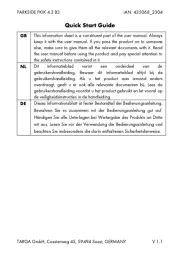
18 Juni 2025
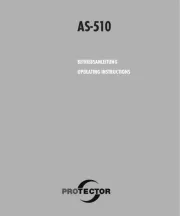
18 Juni 2025
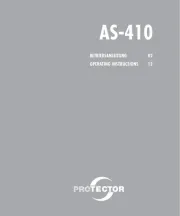
18 Juni 2025

18 Juni 2025
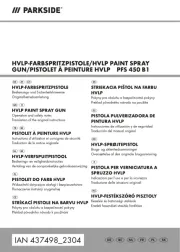
18 Juni 2025

18 Juni 2025
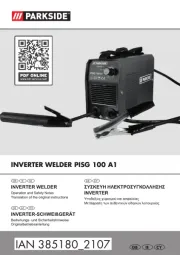
18 Juni 2025
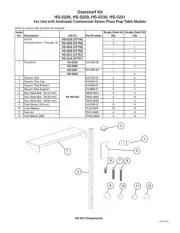
18 Juni 2025
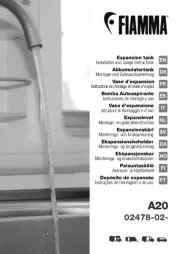
17 Juni 2025
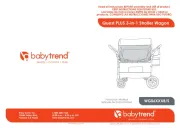
17 Juni 2025